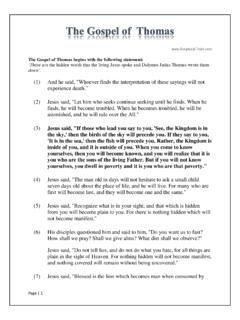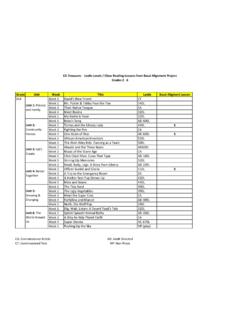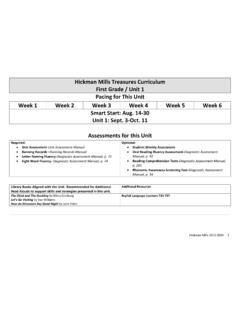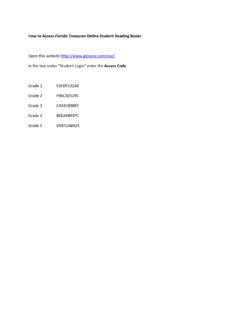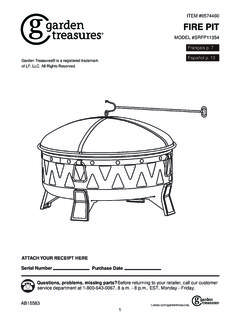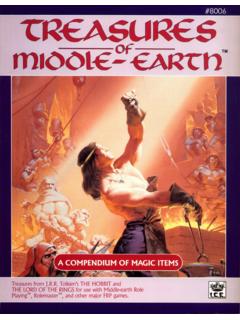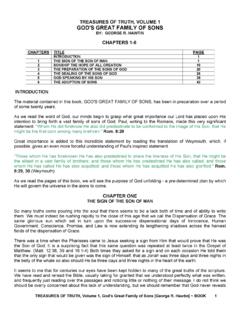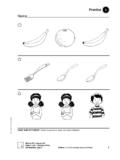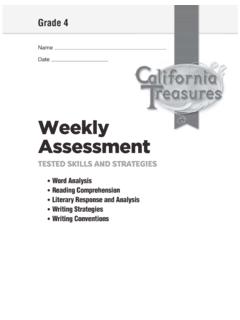Transcription of This PDF was copied from - Scriptural-Truth.com
1 Page | 1 THE SOURCES OF THE This PDF was copied from IN the centuries immediately preceding the Christian Era certain professional Jewish scribes composed a number of works which may well be described as "historical romances," and which were based on the histories of the patriarchs and others as found in the four main divisions of the text of the Hebrew Bible. There is little doubt that most of these works were written either in Hebrew or in the Palestinian vernacular of the period. One of the oldest of such works appears to be the "Book of Jubilees" (see page 3), (also called the "Lesser Genesis" and the "Apocalypse of Moses"), which derives its name from the fact that the periods of time described in it are Jubilees, period contains forty-nine years.
2 It is more or less a Commentary on the Book of Genesis. That a version of this book existed in Greek is proved by the quotations given by Epiphanius, Bishop of Salamis in Cyprus (born about 320, and died in 403 or 404), in his work on "Heresies" (chapter xxxix). The author claimed boldly that his work contains the revelations which were made to Moses by the command of God by the Archangel Michael, who is frequently described as the "Angel of the Face," The book is not wholly original, for it contains narratives and traditions derived from the works of earlier writers; and some of the legends appear to have been taken from early Babylonian sources. The Hebrew, or Aramean, original is lost, and the complete work is only found in Ethiopic, in which language it is known as "K f l ," or "Sections.
3 " The Ethiopic translation was made from Greek. Another pre-Christian work, also written by a Jew, is the "Book of Enoch," which exists now in a more or less complete form, only in an Ethiopic translation, which was made from the Greek. This work is quoted by St. Jude (vv. 14, 15), and there is little doubt that for some three or four centuries its authority, both among the Jews and the Christians of the first and second centuries of our Era, was very great. Whether the Page | 2 "Book of Enoch," as made known to us by the Ethiopic version, truly represents the original Hebrew work is fairly open to doubt; in fact, it seems certain that it does not. It contains a series of fragments or parts of works, of somewhat similar character, which has been strung together, and then added to by writers of different schools of religious thought at different periods.
4 In some parts of it traces have been found of beliefs which are neither Jewish nor Christian. (See page 5.) From time to time during the early centuries of the Christian Era apocryphal works dealing with our Lord and His Apostles and disciples appeared, and, though they were written by Christians, they contained many legends and traditions which their authors borrowed from the works of earlier Jewish and Christian writers. Such works were very popular among the Christian communities of Egypt and Syria, for the thirst for information about our Lord and His life and works, and the adventures and successes of the Apostles in Africa, Western Asia, India and other countries was very great. Side by side with this apocryphal literature there appeared works in Egypt and Syria which dealt with Old Testament History and endeavoured to explain its difficulties.
5 But though Patriarch and Bishop and Priest read the Scriptures and the commentaries on them to the people, and instructed their congregations orally on every possible occasion, there was much in the ancient Jewish Religion, out of which many of the aspects of the Christian Religion had developed, which the laity did not understand. On the one hand, the unlettered Christian folk heard the Jews denouncing Christ and His followers, and on the other, their teachers taught them that Christ was a descendant of King David and Abraham, and that the great and essential truths and mysteries of the Christian Religion were foreshadowed by events which had taken place in the lives of the Jewish patriarchs. Some of the Fathers of the Church in the Vth and VIth centuries wrote sermons and dissertations on the Birth of our Lord, and His Baptism, Temptation, Passion and Death and Resurrection, and proved by quotations from the Prophets that the son of the Virgin Mary was indeed the Messiah and the Saviour of the world.
6 But copies of these works were not multiplied for the use of their congregations, most of the Page | 3 members of which were unlettered folk, and the influence of all written discourses was much circumscribed in consequence. The great monastic institutions possessed copies of the Old and New Testaments written in Greek and Syriac, but these were not available for study by the laity in general, and it is probable that only well-to-do people could afford to have copies of the Books of the Bible made for their private use. Thus the circumstances of the time made it necessary that the Fathers of the Church, or some of the learned scribes, should compile comprehensive works on the history of God's dealings with man as described in the Old Testament, and show the true relationship of the Christian Religion to the Religion of the Hebrew Patriarchs and the to kings of Israel and Judah.
7 There is little doubt that many such works were written, and that their authors based their histories on the writings of their predecessors, and that Christian writers borrowed largely from the Hebrew "Book of Enoch" and the "Book of Jubilees," as well as the Histories and Chronicles which were then extant in Greek. Some of the latter works, those in Greek, were written by men who had access to information which was derived from Babylonian and Assyrian histories written in cuneiform, and, thanks to the labours of Assyriologists, the statements based on such information can, in many cases, be checked and verified. Further reference to this point will be made later on. The oldest of the Christian works on the history of God's dealing with man from Adam to Christ is probably the "Book of Adam and Eve" (see page 9), which, in its original form, was written sometime in the Vth or VIth century of our Era; its author is unknown.
8 As there is no doubt whatever that the writer of the "Cave of Treasures" borrowed largely from the "Book of Adam and Eve," or from the same source from which its writer derived his information, it is necessary to give here a brief description of the object and contents of this work. The oldest manuscript of the "Book of Adam and Eve" known to us is in Arabic and is not older than the XIth century. But many of the legends and traditions found in it are identical in form and expression with those found in the "Annals" of Sa` d bin al-Batr k, or Eutychius, Patriarch of Alexandria ( 933-939), and in the "Eight Books of Mysteries" Page | 4 written by Clement about 750, and in the "Cave of Treasures," which is now generally thought to have been written, or perhaps re-edited, in the VIth century.
9 The Arabic version of the "Book of Adam and Eve" contains two main sections. The first contains a History of the Creation, which claims to be a translation of the "Hexemeron" of Epiphanius, Bishop in Cyprus. In it are given an account of the work of the six days of Creation, the Vision of Gregory concerning the Fall of Satan, a description of the Four Heavens, the Creation of Man, the temptation of Eve, and the expulsion of Adam and Eve from Paradise. The title, "Book of the Aks m ris," would lead one to suppose that the whole work was devoted to the Creation, but it is not, for the second Section contains "The History of the departure of Adam and Eve from Paradise, and their arrival in the Cave of Treasures by the command of God.
10 " The writer of the "Book of Adam and Eve" meant the two sections to form a complete work. The first shows how Adam fell, and the second tells us how God fulfilled the promise which He made to Adam more than once, that after five and a half weeks, 5,500 years, He would send a Redeemer into the world who would save both Adam and his descendants from the destruction which his sin in Paradise had incurred, The writer of the book gives the History of Adam and Eve in full, adding as he progresses in his work the various legends and traditions which he found in the works of his predecessors. This plan he follows until he comes to the Flood, and on to the time of Melchisedek; but, having settled this king in Salem, the rest of his work becomes a bald recital of genealogies, only rarely interspersed with explanations and generalizations.




